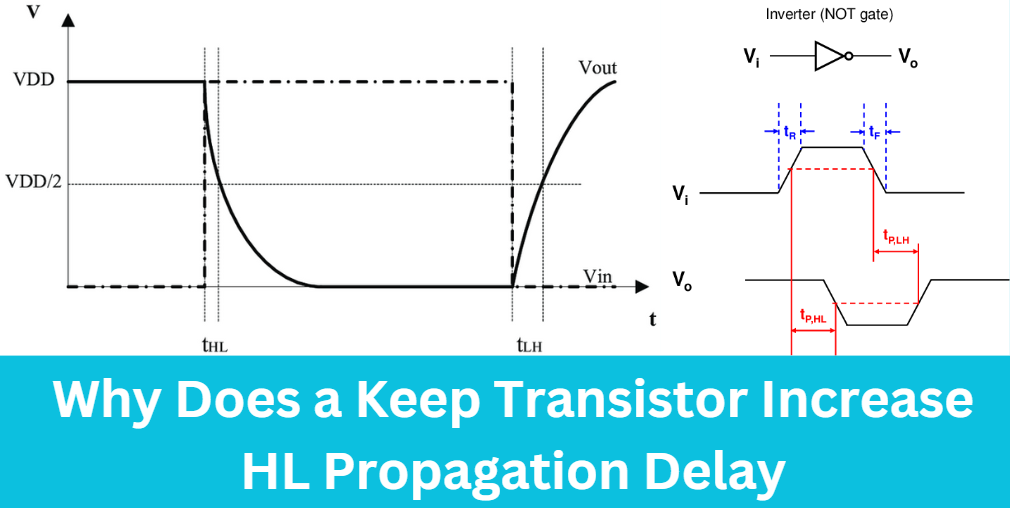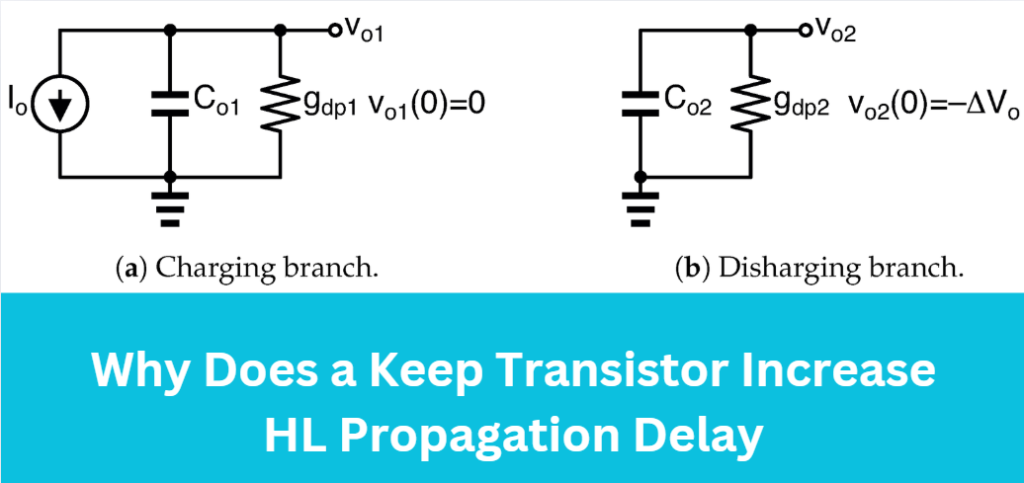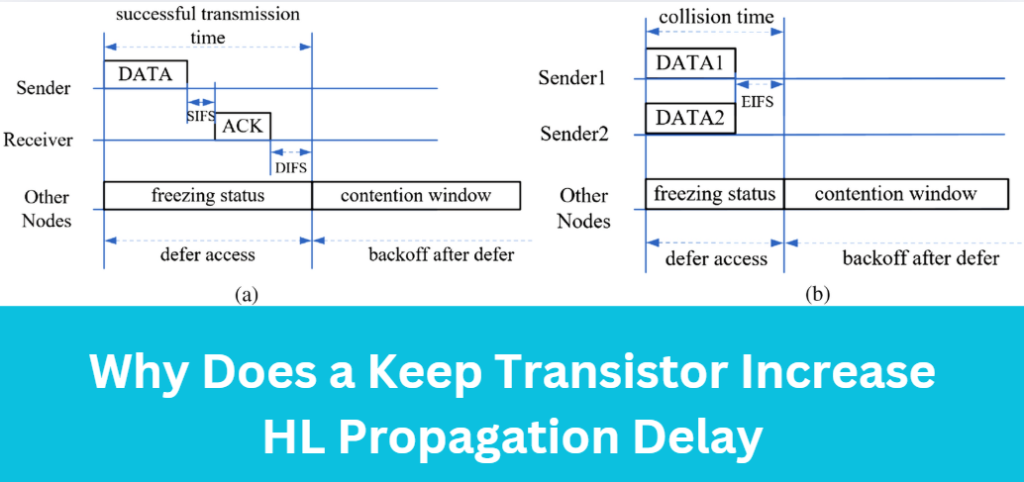
In digital circuits, signal timing and speed are crucial factors for performance. One aspect of timing that engineers must carefully manage is the propagation delay.
Specifically, the question of why does a keep transistor increase HL propagation delay is important for those designing circuits where speed and efficiency matter.
This article explains how keep transistors contribute to higher propagation delays and offers insight into mitigating these effects.
What Is HL Propagation Delay?

HL propagation delay refers to the amount of time it takes for a signal to transition from a high voltage (logic 1) to a low voltage (logic 0). This delay is particularly important in high-speed digital circuits, such as processors and communication systems, as it affects the overall timing and speed at which the circuit operates.
The HL propagation delay is typically influenced by several factors, including capacitance, resistance, and the design of the transistors used in the circuit. It is crucial to manage these delays in high-speed systems to avoid performance bottlenecks.
The Role of Keep Transistors in Circuit Design

What Are Keep Transistors?
A keep transistor is a type of transistor used to stabilize a floating node, ensuring that the voltage does not fluctuate or cause errors. Floating nodes can create unpredictable behavior, especially in systems that require precise timing and stability.
While keep transistors are essential for maintaining stability, they can affect the timing characteristics of the circuit. This brings us to the question of why does a keep transistor increase HL propagation delay. Keep transistors can introduce additional elements, such as parasitic capacitance and resistance, which affect signal transitions.
How Do Keep Transistors Work?
Keep transistors function by “holding” a node at a specific voltage level. They can be found in circuits that require precise voltage control to prevent fluctuations. However, the very nature of these transistors—especially their added resistance and capacitance—can slow down the discharge process during signal transitions, contributing to an increase in HL propagation delay.
Why Does a Keep Transistor Increase HL Propagation Delay?

Increased Parasitic Capacitance
The introduction of a keep transistor adds parasitic capacitance to the circuit. Capacitance directly influences the speed at which the signal can transition from high to low. As the capacitance increases, it takes longer for the voltage to discharge, which leads to an increase in HL propagation delay.
Added Resistance
Keep transistors also introduce additional resistance into the circuit. Resistance slows the flow of current, which again affects how quickly the node discharges. The additional resistance introduced by the keep transistor further contributes to the HL propagation delay by extending the time it takes for the voltage to drop from high to low.
Impact on the Pull-Down Network
The pull-down network is responsible for discharging the node when transitioning from a high to low signal. A keep transistor adds extra load to the pull-down network, reducing its efficiency. This can result in a slower discharge time and, therefore, an increase in HL propagation delay.
Strategies to Mitigate HL Propagation Delay

To reduce the impact of keep transistors on HL propagation delay, several strategies can be employed. One effective method is to reduce the size of the keep transistor. Smaller transistors reduce parasitic capacitance and resistance, thereby improving the speed of the signal transition.
Another strategy is to optimize the circuit layout. Minimizing the length of the interconnections between components can reduce capacitance and improve signal transition times. Additionally, strengthening the pull-down network by using larger transistors can help to quickly discharge the node and minimize HL propagation delay.
Applications of Keep Transistors in Circuits

Keep transistors are widely used in various applications, such as memory circuits, low-power systems, and high-speed processors. In memory circuits, they maintain voltage levels and prevent data corruption by stabilizing the node voltage.
In low-power circuits, keep transistors help reduce leakage currents, contributing to overall energy efficiency. However, the challenge remains to balance the advantages of keep transistors with the potential increase in HL propagation delay.
FAQs Related To Why Does a Keep Transistor Increase HL Propagation Delay
1. What is the primary purpose of a keep transistor?
A keep transistor stabilizes voltage at a floating node, ensuring the voltage does not fluctuate, which helps maintain the integrity of the circuit.
2. How does a keep transistor affect HL propagation delay?
A keep transistor increases HL propagation delay by introducing parasitic capacitance and resistance to the circuit, which slow down the discharge process during signal transitions.
3. Why is HL propagation delay important in digital circuits?
HL propagation delay affects the overall speed and timing of digital circuits. Managing this delay is crucial to ensure that the circuit performs optimally, especially in high-speed applications like processors.
4. Can the increase in HL propagation delay caused by keep transistors be minimized?
Yes, the impact of keep transistors on HL propagation delay can be minimized by reducing the size of the keep transistor, optimizing the circuit layout, and strengthening the pull-down network.
5. Are keep transistors always necessary in digital circuits?
While keep transistors are essential in circuits requiring high voltage stability, such as memory systems or low-power devices, they are not always necessary in every circuit. Their impact on HL propagation delay should be considered when used in high-speed systems.
Conclusion About Why Does a Keep Transistor Increase HL Propagation Delay
Understanding why does a keep transistor increase HL propagation delay is essential for circuit designers, as it helps to balance the stability benefits of keep transistors with their impact on signal timing. By strategically minimizing the added capacitance and resistance, engineers can optimize circuit performance without sacrificing the benefits of using keep transistors.
Affiliated Posts Like Why Does a Keep Transistor Increase HL Propagation Delay
Verus A Holistic Training Collective
Yout8ube: Unlocking the Potential of a Creative Branding Opportunity






